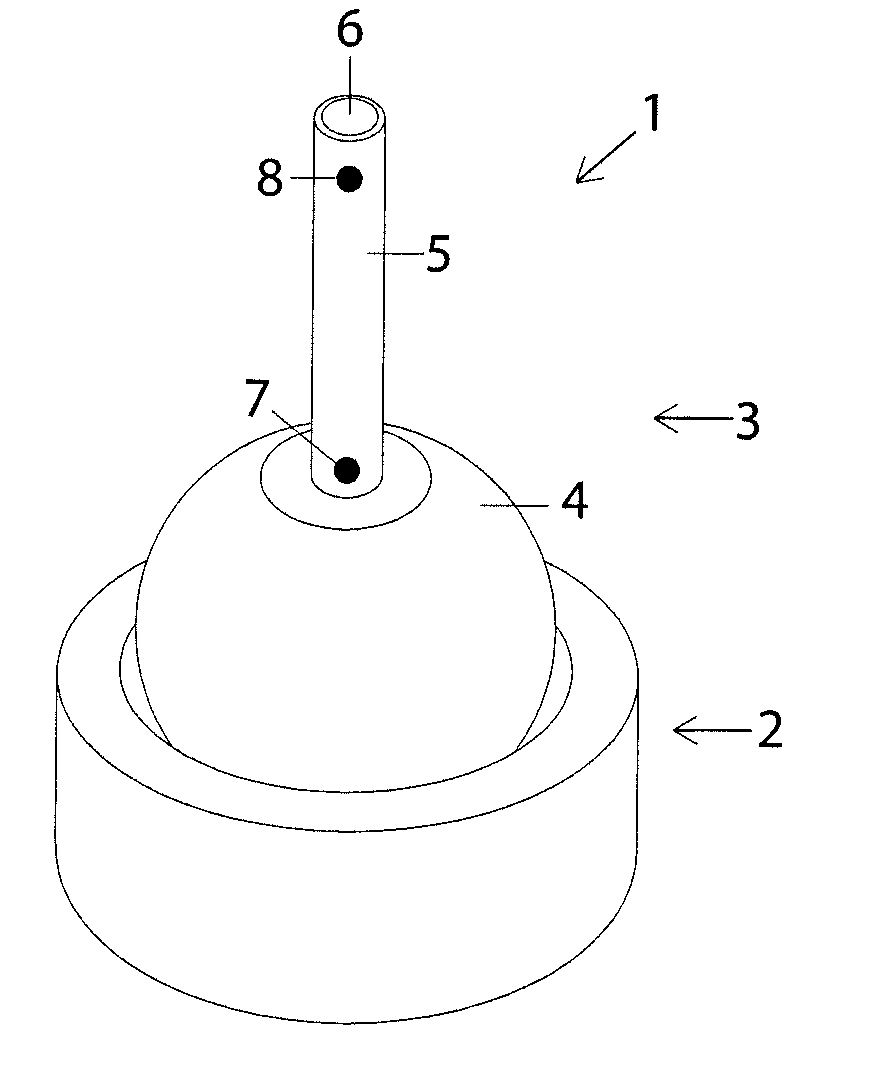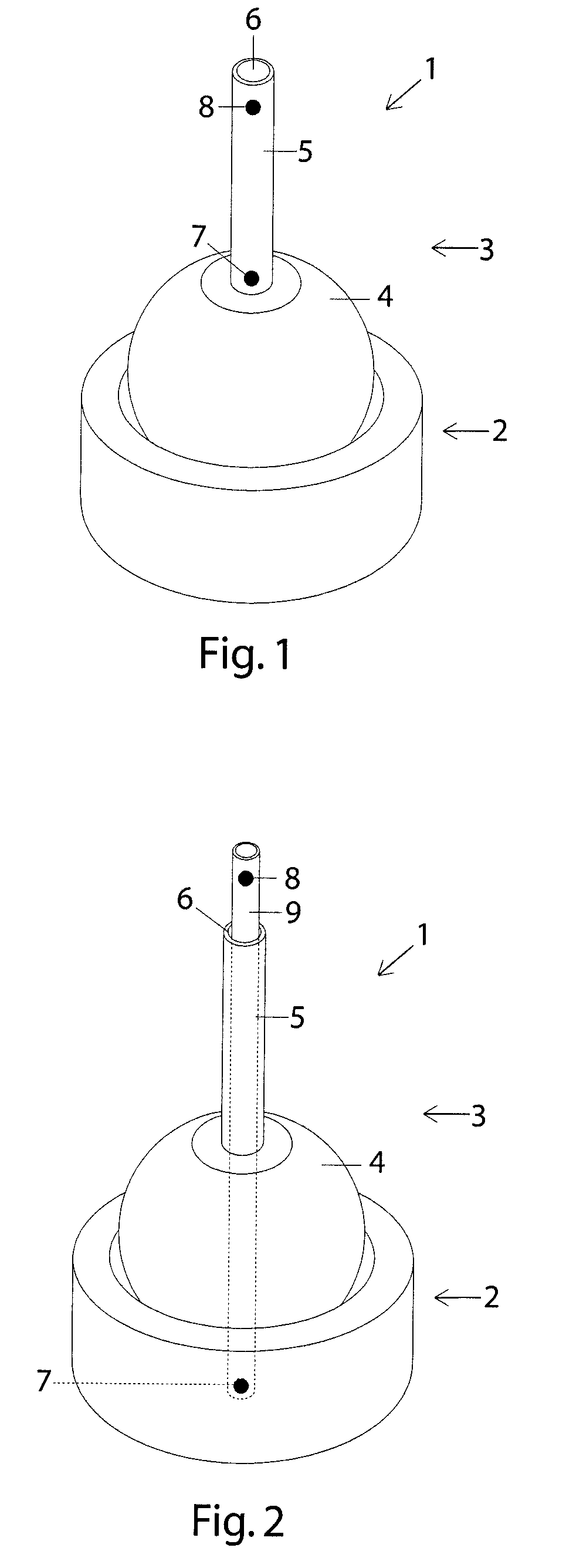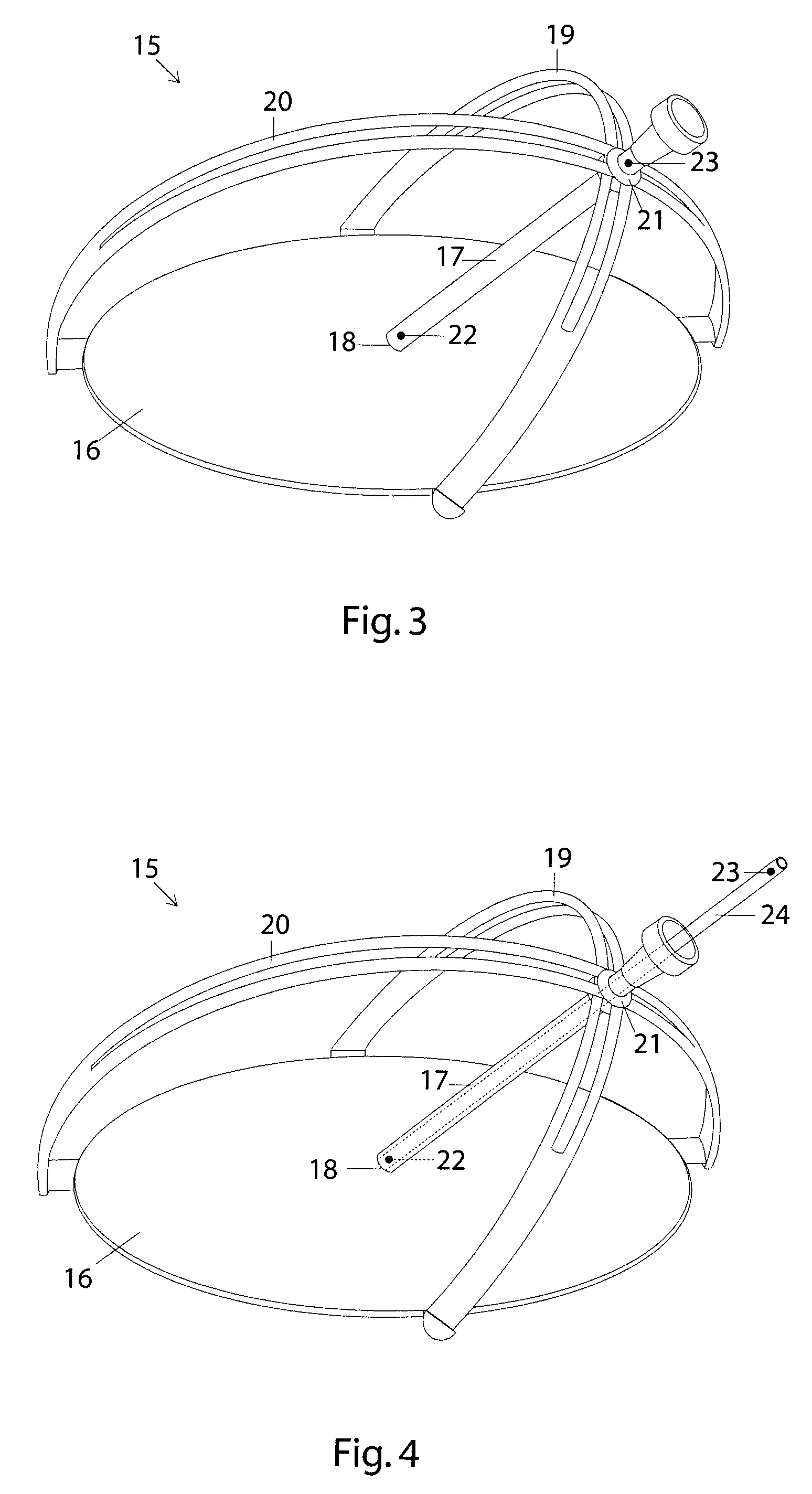Medical guide for guiding a medical instrument
a medical instrument and guide technology, applied in the direction of sensors, diagnostics, applications, etc., can solve the problem of minimal use, achieve the effect of minimizing patient discomfort, small and economical, and maximizing safety
- Summary
- Abstract
- Description
- Claims
- Application Information
AI Technical Summary
Benefits of technology
Problems solved by technology
Method used
Image
Examples
example 1
[0042]Given that
Lmin=t / (sin αmax)=t / (sin(arctan (R / D))) (1)
a length between two markers on a trajectory guide of 10 cm, a lesion with a radius of 0.25 cm and a slice thickness of 0.2 cm, the lesion will be accurately targeted if it lies at a maximum depth of 12.5 cm.
example 2
[0043]If five different markers are used, with equal distance between each marker along a straight line, and given that
Lmin=t / (sin αmax)=t / (sin(arctan (R / D))) (1)
a lesion with a radius of 0.25 cm and a slice thickness of 0.2 cm, the indicated markers visible in the image obtained in Table 1 correspond to a maximum depth (Dmax) where a lesion will be accurately targeted. Note that the markers are labeled m1 through m5, where m1 is the most distal marker (i.e. essentially at the entrance point of e.g. the biopsy guide) and m5 is the most proximal marker and the distance between m1 and m5 is equal to L.
TABLE 1Markers visible in imageDmaxDmax if L = 10 cmm10.25 * L2.5 cmm1, m2 0.5 * L5.0 cmm1, m2, m30.75 * L7.5 cmm1, m2, m3, m4 1.0 * L10.0 cm m1, m2, m3, m4, m51.25 * L12.5 cm
PUM
 Login to View More
Login to View More Abstract
Description
Claims
Application Information
 Login to View More
Login to View More - R&D
- Intellectual Property
- Life Sciences
- Materials
- Tech Scout
- Unparalleled Data Quality
- Higher Quality Content
- 60% Fewer Hallucinations
Browse by: Latest US Patents, China's latest patents, Technical Efficacy Thesaurus, Application Domain, Technology Topic, Popular Technical Reports.
© 2025 PatSnap. All rights reserved.Legal|Privacy policy|Modern Slavery Act Transparency Statement|Sitemap|About US| Contact US: help@patsnap.com



